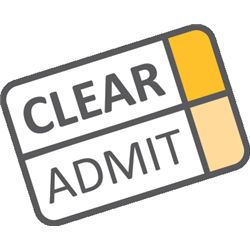Today’s GMAT tip comes to us from Veritas Prep. In today’s blog post, they explain how and why to think like the testmaker while taking the GMAT. Read on to see what they have to say!
At Veritas Prep we advocate that you learn to Think Like the Testmaker, and to think about how well the Testmaker knows you.
The makers of the GMAT will admit that theirs is a test of “higher order thinking”, of your ability to think critically, solve problems efficiently, and otherwise demonstrate not merely that you have knowledge but that when you do have knowledge you can leverage it to greater gain. For this reason, the test is obligated to use tricks, shortcuts, and partial knowledge against you if that’s all you bring to the table on harder questions; at some point in the 500s/600s, the test has to determine not just “who studied” but “who can really think and problem solve”. And for that reason, a little bit of knowledge is a dangerous thing.
Take, for example, the common Critical Reasoning mantra that you have likely seen online: “Out of Scope.” While it is true that when an answer choice in a Strengthen or Weaken question is wholly out of scope of the conclusion, that choice is incorrect, on difficult questions the correct answer often looks out of scope at first glance but upon further inspection is perfectly perpendicular to that conclusion. On average and below-average level questions, “out of scope” is often enough to eliminate the wrong answers and get the question right, but as questions get tougher the test is tasked with finding out who can say “out of scope” and who truly understands what that means. Consider the question:
Numerous ancient Mayan cities have been discovered in the Yucatan peninsula in recent decades. The ruins lack any evidence of destruction by invading forces, internal revolts, or disease, and appear simply to have been abandoned. Some archaeologists have theorized that the cities were abandoned due to a severe drought known to have occurred in the region between 800 and 1000 A.D.
Which of the following, if true, most strongly supports the archaeologists’ theory?
(A) Ample archaeological evidence of Mayan peasant revolts and city-state warfare exists, but such events could never result in the permanent abandonment of cities.
(B) No monumental inscriptions created after 900 A.D. have been found in these cities, but inscriptions dating before that time have been found in abundance.
(C) Studies of Yucatan lake sediment cores provide conclusive evidence that a prolonged drought occurred in the region from 800 to 1000 A.D.
(D) Climatic studies have documented cycles of intermittent drought in the Yucatan peninsula dating from the present to at least 7,000 years ago.
(E) The Mayan city, Uxmal, was continuously inhabited from 500-1550 A.D.
Trap answer C is perfectly within the scope of the conclusion, that Mayans evacuated their civilization during a drought between 800-1000 A.D. But being within the scope is not the only requirement of a correct Strengthen answer – that answer must also strengthen the conclusion! And this answer choice does not provide any new information – the stimulus itself already states as fact that the drought occurred in that timeframe. The only missing evidence is that the Mayans left during that time period – and that is what correct answer choice B provides.
But here’s why you may not have picked B – within the first few words, it doesn’t seem to get near the conclusion. “No monumental inscriptions created…” does not seem to have anything to do with Mayans or droughts, so many examines eliminate this choice without waiting to see what comes next – a direct link to the time period of the drought. If those inscriptions cease after 900 A.D. – right in the middle of that drought – then that provides evidence that the Mayans left during that timeframe. THAT is the missing piece, and that is why answer choice B is correct.
Many have eliminated B confidently with that phrase “out of scope”, without knowing two things:
– Out of Scope only works when the entire answer choice is out of scope. You need to give the full answer choice a read to see if it finds the scope partway through.
– The authors of the GMAT know that you want to use “Out of Scope” frequently, even when it does not apply. So this is their device against you – they often, on tougher questions, spend 8-10 words throwing you off the scent before the answer choice curves right back down the middle of the strike zone. This way, they ensure that those with just a little bit of knowledge are weeded out while those who truly think critically are rewarded.
The “out of scope” device is just one of many that the authors of the GMAT have to use against those who plan to use just a little bit of knowledge with expectations of higher scores. As you study, remember to Think Like the Testmaker and pay attention to how the authors of the GMAT either hide the right answer from you or sell the wrong answer to you. A little bit of knowledge is dangerous to you, but if you go further in your study and analyze why you were trapped into the mistakes you made, you can develop enough knowledge of thy enemy to be dangerous to the GMAT.
For more information on Veritas Prep, download Clear Admit’s independent guide to the leading test preparation companies here. This FREE guide includes coupons for discounts on test prep services at ten different firms!








